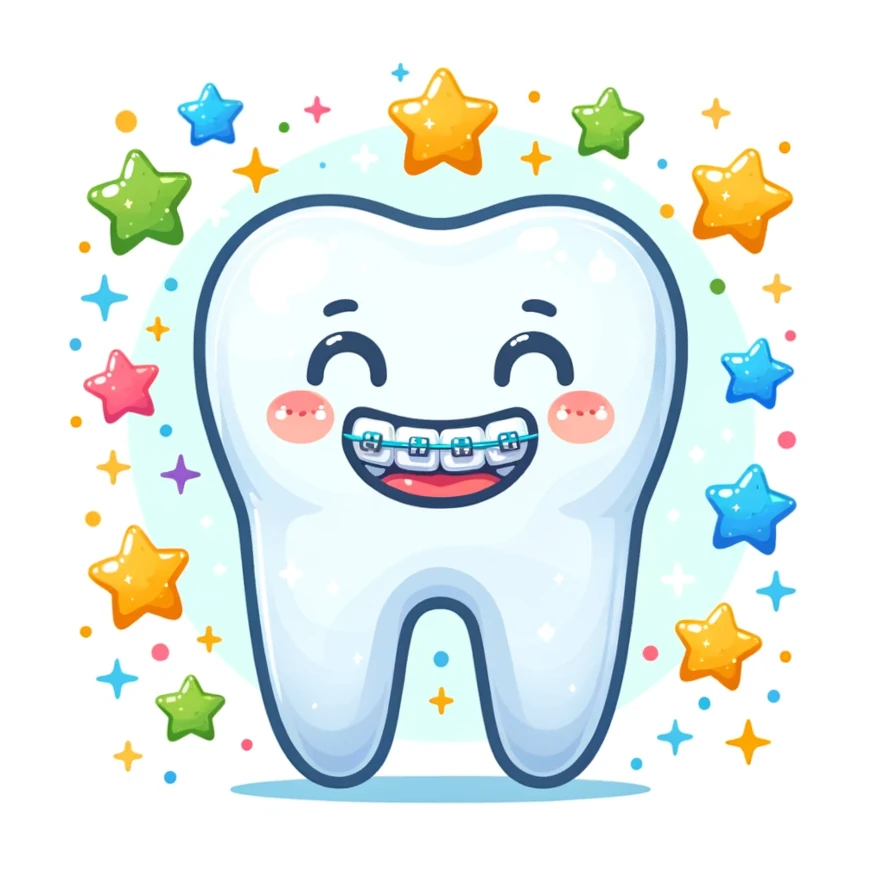Kids Dentist Guide: Early Smile Care in Orthodontics for Children and Teens

As kids dentist specializing in orthodontics, the focus is not just on treating dental issues, but also on guiding the healthy development of children and teens’ smiles. Understanding when to begin orthodontic treatment and what it entails can be crucial for parents who aim to give their children the gift of a confident, beautiful smile.
Kids Dentist Advice: When to Start Orthodontic Care
The American Association of Orthodontists, along with numerous practicing orthodontists, strongly advise that children should receive their initial orthodontic evaluation by the age of seven. This recommendation is based on the understanding that early assessment is key in detecting potential orthodontic problems at a stage when they might be more easily managed or corrected. An early evaluation does not necessarily mean that a child will immediately start treatment. Rather, it provides a crucial opportunity for timely intervention or effective monitoring, ensuring that if treatment is needed, it can commence at the most opportune moment.
This proactive approach allows orthodontists to observe the development of a child’s jaws and teeth, identifying issues such as misalignment, overcrowding, or bite problems at an early stage. Intervening at this juncture can lead to more effective treatment outcomes, and in some cases, can even simplify or reduce the need for more extensive orthodontic procedures in the future. By scheduling an evaluation before the age of seven, parents can ensure that their child’s orthodontic care is initiated at a time that maximizes potential benefits, setting the foundation for healthy dental development and a beautiful, lasting smile.
Role of a Kids Dentist in Early Orthodontic Intervention
A kids dentist who specializes in orthodontics can:
- Guide Jaw Growth: Early interventions can be crucial in guiding the growth of the jaw effectively.
- Manage Dental Arch Width: Adjustments in the width of the dental arches can create necessary space for permanent teeth.
- Address Harmful Oral Habits: Common habits in children, like thumb sucking, can be corrected.
- Boost Appearance and Self-Esteem: Early corrections can help alleviate the psychological impacts of dental irregularities.
- Guide Permanent Teeth: Proper guidance can reduce future orthodontic interventions.
Orthodontic Options for Kids and Teens
Today’s orthodontic treatments, provided by orthodontists, encompass a diverse range of options designed to cater to different needs and preferences:
- Traditional Metal Braces: This well-established method is widely used for its effectiveness in treating a variety of dental issues, such as misalignment, overcrowding, and bite problems. Metal braces are known for their durability and efficiency in complex orthodontic cases.
- Ceramic Braces: As a visually appealing alternative to metal braces, ceramic braces blend in with the natural color of the teeth. They are especially popular among teenagers and adults who are conscious of the aesthetic aspects of braces but require the strength and effectiveness of traditional braces.
- Invisalign for Teens: A modern approach to orthodontics, Invisalign offers clear, removable aligners tailored specifically for teenagers. These aligners are not only discreet but also allow for easier maintenance of oral hygiene, as they can be removed for eating and cleaning.
- Lingual Braces: Offering the utmost in discretion, lingual braces are fitted to the back side of the teeth, making them invisible when smiling or speaking. They are ideal for individuals who seek effective orthodontic treatment without the visible presence of braces.
- Self-Ligating Braces: This type of brace uses a specialized clip in place of elastics to hold the brace’s wire in place. This can reduce the amount of pressure exerted on the tooth and require fewer adjustments, making them a comfortable alternative to traditional braces.
- Customizable Orthodontic Appliances: Beyond braces, orthodontists often employ various customized appliances, such as palatal expanders or retainers, as part of a comprehensive orthodontic treatment plan. These appliances can address specific dental issues and support the overall success of the orthodontic process.
Typical Treatment Journey in Kids Orthodontics
The duration of orthodontic treatment varies, with traditional braces typically requiring 18 to 36 months. Invisalign treatments may offer a shorter course. Regular check-ups with the orthodontist are essential for progress monitoring.
Managing Daily Life with Braces for Kids

Managing daily life with braces for kids involves several important aspects that extend beyond the initial fitting. Orthodontists play a key role in providing comprehensive guidance to ensure that children adapt well to their new braces and maintain them properly. This guidance typically covers various facets of daily life, from oral hygiene practices to dietary adjustments, and even includes tips for dealing with any discomfort or challenges that may arise during the treatment period.
Oral Hygiene with Braces
Maintaining oral hygiene is paramount when wearing braces. Orthodontists provide detailed instructions on effective brushing and flossing techniques suitable for braces. Children are often advised to use a soft-bristled toothbrush and fluoride toothpaste, brushing after every meal to remove food particles trapped in and around the braces. Flossing daily with a floss threader or a water flosser can help in cleaning the hard-to-reach areas between the teeth and braces. Regular dental check-ups and cleanings become even more crucial during this period to prevent issues like cavities and gum disease.
Dietary Adjustments
Dietary changes are often necessary to protect the braces from damage. Orthodontists recommend avoiding hard, sticky, and chewy foods that can break or dislodge the braces. Foods like popcorn, nuts, hard candies, gum, and chewy candy are typically off-limits. Instead, softer foods that require minimal chewing are encouraged. It’s also advised to cut fruits like apples into smaller pieces and avoid biting directly into hard foods.
Managing Discomfort
It’s common for children to experience some discomfort or soreness, especially after getting braces tightened. Orthodontists provide advice on managing this discomfort, which might include using over-the-counter pain relievers, applying orthodontic wax to prevent braces from rubbing against the inside of the mouth, and using a saltwater rinse to alleviate soreness and irritation.
Participating in Sports and Activities
For kids involved in sports, orthodontists recommend wearing a mouthguard to protect the braces and mouth from injury. This is especially important in contact sports. Similarly, for children playing wind instruments, adjustments might be needed, and orthodontists can offer specific advice on how to adapt to playing with braces.
Emotional Adjustment
Adjusting to life with braces also involves emotional aspects, particularly for children and teenagers. Orthodontists are aware of the potential self-consciousness and provide support and reassurance. They encourage children to understand the long-term benefits of braces and often connect them with peer support groups where they can share experiences with others undergoing similar treatments.
Regular Follow-Ups
Regular follow-up appointments with the orthodontist are crucial for monitoring progress and making any necessary adjustments to the braces. These appointments also serve as opportunities for children and parents to ask questions and discuss any concerns they might have about the treatment.
Understanding the Orthodontics Costs
Orthodontic treatment costs can vary. Most orthodontists offer various payment plans, and many dental insurance plans cover a portion of orthodontic care.
Beyond Aligned Teeth: The Comprehensive Benefits of Orthodontics
Orthodontic treatment by your orthodontist does more than straighten teeth; it improves overall oral function and health, and significantly boosts confidence and self-esteem.

Conclusion: Embracing Orthodontics for a Lifetime of Benefits
Choosing to invest in your child’s orthodontic care is a decision that impacts their overall health and confidence. A dentist specializing in orthodontics is your partner in this journey, ensuring not just a radiant smile but a functional and healthy bite that serves well into the future.
